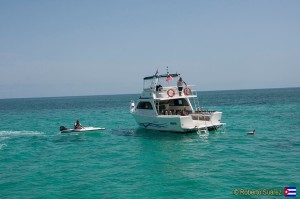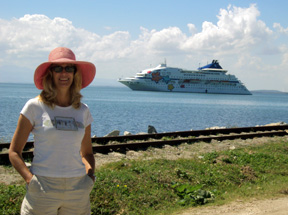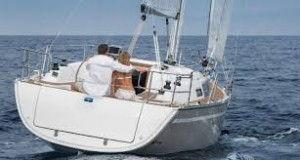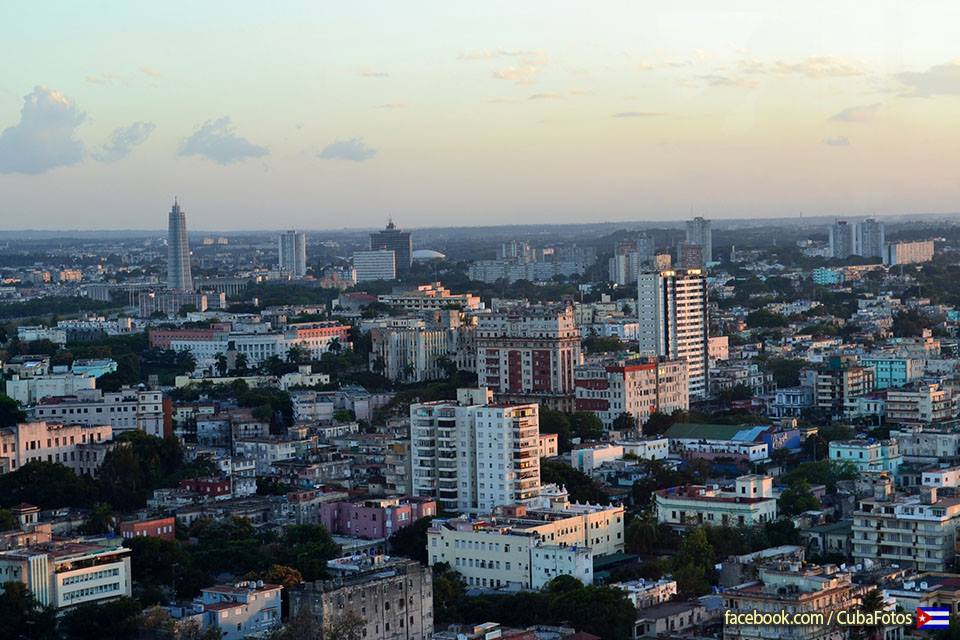TOURISM BOOM OF UNITED STATES YACHTS AND CRUISERS IN CUBA.
The Cuban government expects a booming of tourism to Cuba after resuming relations with the American nation. For the first time in decades, the US government is authorizing a comprehensive large-scale sea travel to Cuba range.
A $ 3 million yacht departed from Key West this week with two barbeque grills, television with 250 satellite channels and a plan in case they had to rescue stranded Cuban rafters in the Florida Straits.
After four hours of sailing smoothly Still Water sailboat docked at the Marina Hemingway in Havana. Breakfasted wealthy passengers smoked salmon and biscuits, then boarded a bus with air conditioning Cuban government to conduct a one-day visit to the city.
The Cold War turned the Straits of Florida in a scenario of threat of nuclear confrontation and the grave of thousands of boat people seeking a better life in America. Now, the normalization of the relationship between the US and Cuba which for years was again problematic is transforming the maritime space of 90 miles between the two countries in a giant playground for cruise ships and luxury yachts striking.
For the first time in decades, the US government is authorizing a comprehensive large-scale sea travel to Cuba range. Since detente began last year, the government of President Barack Obama has issued permits to dozens of vessels, at least five ferry companies, four cruise lines and Palm Beach company that rented the Still Water. Sailboat 78 feet long satellite internet has four cabins and a bar.
“It’s a little bubble. One can have the comforts of home in Havana,” said Friedlander Jim group president of Academic Arrangements Abroad, who helped organize the trip.
Cuba tourism officials and fans and entrepreneurs linked to ride boats are rubbing their hands at the possible return of the days prior to the socialist revolution on the island festival, when thousands of wealthy Americans annually sailed to Havana to enjoy long weekends of tropical relaxation.
“What is the natural market for nautical tourism in Cuba? United States, the first country in the international yachting market,” said Jose Miguel Diaz Escrich, commodore of the Hemingway International Yacht Club of Cuba. “If before the revolution came a few thousand yachts Cuba today we are talking about tens of thousands of yachts that come”.
Fidel Castro called in 2005 to cruise ships as “floating hotels, floating restaurants” that “visit countries to leave the garbage, empty cans and papers for a few miserable cents.” But under the command of his brother and successor, President Raul Castro, the government seems to have no such reservations. Cuba has been rapidly passing port orders from new US cruise ships and new marine planning with thousands of places to dock yachts in the polluted waters of the bay of Havana, as well as in the waters of white sand resort Varadero, about an hour and a half away by car.
Even the first signs of a surge in the arrival of boats is giving rise to surprising, surreal contrasts, with a growing number of expensive pleasure boats touring Cuban waters where fishermen sail on rickety boats, waters over which an increasing flow of migrants head north on unstable rafts.
Tourism itself remains illegal under the embargo. The yacht broker Paul Madden received permission from the Obama administration last month to operating income yachts for trips “person to person” to guide the US and Cuban governments to jointly accompany groups through activities of a whole day land to encourage interaction between Cubans and Americans. New licenses cruises operate under the same model.
The increase in leisure travel by boat is a sign of the eagerness of the two countries to normalize relations is irreversible for future government, experts said.
“For a long time the atmosphere was not right. The cocktail hour in the aft deck and cruise trip were evocation of tourism” (which is prohibited), said Robert Muse, a specialist in US law on Cuba .
“I think that under the Obama accelerates to consolidate what will be his legacy around Cuba does not have much time to worry about such things,” Muse, who represents a US company new licensed ferry said.
Muse said he believes the trip to Cuba in boats would still limited due to mutual susceptibility to the Straits of Florida, scene of major maritime tragedies such as the Cuban Missile Crisis and the Mariel boatlift.
The most heated point of discussion between those Cuban specialists is whether the island can cope quickly to what is expected to be a massive demand for modern facilities for boats.
Agencies / AP / EFE / InternetPhotos / Excerpts / www.thecubanhistory.com
The Cuban History, Hollywood.
Arnoldo Varona, Editor.
EN AUGE TURISMO DE YATES Y CRUCEROS DE EEUU EN CUBA.
El gobierno cubano prevé un alza tras reanudar relaciones con la nación norteamericana. Por primera vez en décadas, el gobierno estadounidense está autorizando un rango amplio de viajes marítimos de gran escala a Cuba.
Un yate de $3 millones partió de Key West esta semana con dos parrillas para asar carne, televisión con 250 canales vía satélite y un plan por si se tuviera que rescatar a balseros cubanos desamparados en el Estrecho de Florida.
Después de cuatro horas de navegación sin contratiempos el yate Still Water atracó en la Marina Hemingway de La Habana. Los adinerados pasajeros desayunaron salmón ahumado y bizcochos, luego abordaron un autobús del gobierno cubano con aire acondicionado para realizar una visita de un día a la ciudad.
La Guerra Fría convirtió el Estrecho de Florida en un escenario de amenaza de confrontación nuclear y una tumba de miles de balseros que buscaban una mejor vida en Estados Unidos. Ahora, la normalización de la relación entre Estados Unidos y Cuba que durante años fue problemática está transformando de nuevo el espacio marítimo de 90 millas entre ambas naciones en una zona de recreo para cruceros gigantescos y llamativos yates de lujo.
Por primera vez en décadas, el gobierno estadounidense está autorizando un rango amplio de viajes marítimos de gran escala a Cuba. Desde que se inició la distensión el año pasado, el gobierno del presidente Barack Obama ha emitido permisos a decenas de embarcaciones, al menos a cinco compañías de transbordadores, a cuatro líneas de cruceros y a la empresa de Palm Beach que rentó el Still Water. El yate de 78 pies de largo tiene internet satelital, cuatro camarotes y un bar.
“Es una pequeña burbuja. Uno puede tener las comodidades de casa en La Habana”, dijo Jim Friedlander, presidente de Academic Arrangements Abroad, grupo que ayudó a organizar el viaje.
Funcionarios de turismo de Cuba y aficionados y empresarios estadounidenses vinculados al paseo en embarcaciones se frotan las manos ante el posible retorno de los días de fiesta previos a la revolución socialista en la isla, cuando miles de estadounidenses adinerados navegaban anualmente a La Habana para gozar de largos fines de semana de esparcimiento tropical.
“¿Cuál es el mercado natural para el turismo náutico en Cuba? Estados Unidos, primer país del mercado del yatismo internacional”, dijo José Miguel Díaz Escrich, comodoro del Club Náutico Internacional Hemingway de Cuba. “Si antes de la revolución venían algunos miles de yates a cuba hoy estaríamos hablando de decenas de miles de yates que vendrían”.
Fidel Castro calificó en 2005 a los cruceros como “hoteles flotantes, restaurantes flotantes” que “visitan los países para dejarles la basura, las latas vacías y los papeles por unos cuantos miserables centavos”. Pero bajo el mandato de su hermano y sucesor, el presidente Raúl Castro, el gobierno parece no tener tales reservas. Cuba ha estado aprobando rápidamente pedidos de puerto por parte de barcos cruceros estadounidenses nuevos, y planeando nuevas marinas con miles de lugares para que atraquen yates en las contaminadas aguas de la bahía de La Habana, así como en las aguas de arena blanca del centro turístico de Varadero, aproximadamente a una hora y media de distancia en automóvil.
Incluso los primeros indicios de un auge en la llegada de embarcaciones está dando origen a contrastes sorprendentes, surrealistas, con un creciente número de costosas embarcaciones de placer recorriendo aguas donde pescadores cubanos navegan sobre botes desvencijados, aguas sobre las cuales un creciente flujo de migrantes se dirige al norte en balsas inestables.
El turismo en sí sigue siendo ilegal bajo el embargo. El corredor de yates Paul Madden recibió permiso del gobierno de Obama el mes pasado para operar renta de yates para viajes de “persona a persona” con guías de los gobiernos estadounidense y cubano que conjuntamente acompañarán a grupos a través de actividades de todo un día en tierra para fomentar la interacción entre ciudadanos cubanos y estadounidenses. Cruceros con licencias nuevas operarán bajo el mismo modelo.
El aumento de los viajes en embarcaciones de esparcimiento es una señal del ansia de los dos países para que la normalización de relaciones sea irreversible para gobierno futuros, dijeron expertos.
“Durante mucho tiempo la atmósfera no era la correcta. La hora del cóctel en la cubierta de popa y el viaje en crucero eran evocación de turismo” (lo cual está prohibido), dijo Robert Muse, un especialista en ley de Estados Unidos sobre Cuba.
“Me parece que conforme el gobierno de Obama acelera para consolidar lo que será su legado en torno a Cuba no tiene mucho tiempo para preocuparse sobre ese tipo de cosas”, dijo Muse, quien representa a una compañía estadounidense de transbordadores con licencia nueva.
Muse señaló que cree que el viaje a Cuba en embarcaciones seguiría limitado debido a susceptibilidad mutuas respecto al Estrecho de Florida, escenario de importantes dramas marítimos como la Crisis de los Misiles y el Éxodo de Mariel.
El punto de discusión más acalorado entre tales especialistas cubanos ahora es si la isla puede hacer frente rápidamente a lo que se espera será una demanda masiva de instalaciones modernas para embarcaciones.
Agencies/AP/EFE/InternetPhotos/Excerpts/www.thecubanhistory.com
The Cuban History, Hollywood.
Arnoldo Varona, Editor.



 TOURISM BOOMING of U.S. Yachts and Cruisers in Cuba. *** EN AUGE TURISMO de Yates y Cruceros de EEUU en Cuba.
TOURISM BOOMING of U.S. Yachts and Cruisers in Cuba. *** EN AUGE TURISMO de Yates y Cruceros de EEUU en Cuba.



